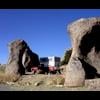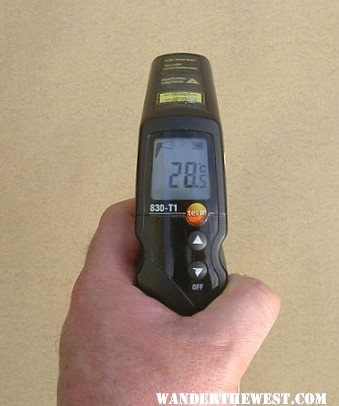My statement was intended to be about campers, not so much houses. I don't think only a radiant barrier would be sufficient for a house. Reminds me of those emergency space blankets.
We use bulk insulation in houses to reduce heat loss from
conduction. I used to do my own calcs for to prove energy efficiency for building permits and the formula went: Square Footage x Temp. Difference x U value (inverse of R value) = BTU's lost per hour. Take a 8' x 10' wall with R20 insulation with 70F inside and 30F outside:
80SF x 40F (70F-30F) x .05 (inverse of 20) = 160 BTU's. Aluminum frame windows are an example where conductive heat loss is fairly severe. Sometimes the frames are so cold, they hit dew point and condense water. FWC uses styrofoam (I believe) in the ceiling as a type of bulk insulation.
Convective heat loss can happen, but you need the air to be mighty still for the air to begin to circulate. I don't think it's that significant, but that's just my opinion. It's " not intended to be a factual statement "
 Infiltration
Infiltration can be an issue, but what the hey! I'm cracking my vents when I run my Wave anyhow. And when we open the door, well the interior gets an air change on the spot.
Radiant loss is interesting. Warm bodies emit long-wave infrared radiation that travels in a straight line. Thermal radiation is what we feel from the sun or a woodstove. You
can store radiant heat with mass (you
wanted a granite countertop in your camper didn't you??

). Regular low-density insulation (fiberglass batts, blown cellulose,etc.) are very poor at stopping infrared loss. This is where aluminum foil can be very effective as a
radiant barrier. The reflectix has this attribute and is also effective as a barrier against conductive heat loss due to it's insulation values from two layers of closed air cells.
For the record:
I am not a reflectix dealer 


2021 RAM 3500 Crew 4x4, 6.4 hemi/8 speed trans with 4.10 gears, Timber Grove bags, Falken Wildpeak 35" tires.
OEV Aluma 6.75 flatbed, Bundutec Odyssey camper on order for 2024
For this year we're still using our 2008 FWC Hawk with victron DC-DC charger, 130w solar, MPPT controler
with 2000w inverter and external 120v output and 12v solar input with 100w portable solar. http://lighthawkphoto.com
















